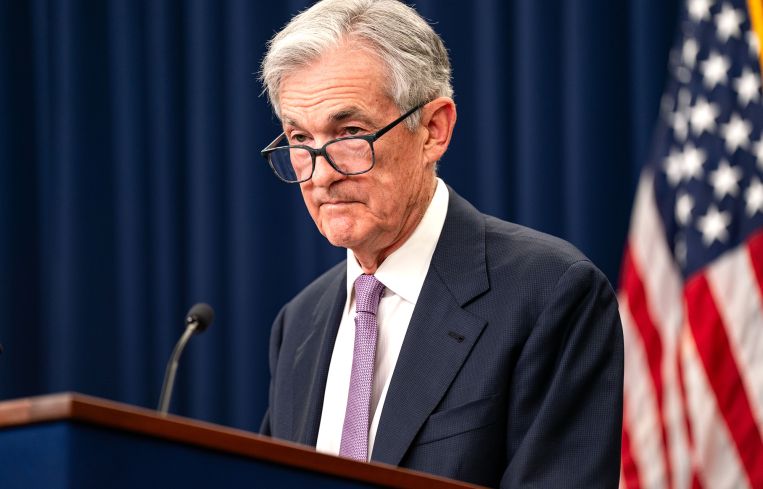Fed Holds Interest Rates Steady, Hints at Near-Term Cuts
By Andrew Coen June 18, 2025 3:22 pm
reprints
The Federal Reserve continued its measured approach to interest rate policy this year with its fourth straight pause of 2025, but signaled possible rate cuts could be around the corner.
The central bank maintained its benchmark interest rate at between 4.25 percent and 4.5 percent Wednesday amid continued market uncertainty about President Donald Trump’s tariff policy. However, the Fed did indicate in its post-meeting report that two cuts might be on the horizon later in 2025 based on the “dot plot” matrix of individual committee members projecting future monetary policy decisions estimating a fed funds rate hovering around 3.4 percent by 2027.
“The changes to trade, immigration, fiscal and regulatory policies continue to evolve, and their effects on the economy remain uncertain,” Fed Chair Jerome Powell said in a post-meeting press conference. “For the time being we are well positioned to wait to learn more about the likely course of the economy before considering any adjustments to our policy stance.”
Powell noted that inflation has come down “a great deal” but “remains somewhat above” the Fed’s long-term 2 percent goal. He also stressed that the inflationary effects from tariff increases, while down from a peak in April, “are likely to push up prices and weigh on economic activity” and remain “uncertain” for the rest of 2025.
Lisa Pendergast, president and CEO of the Commercial Real Estate Finance Council (CREFC), said risks of stagflation with persistent slow economic growth, high unemployment and high inflation is a concern to the CRE industry, which creates challenges for how the Fed should respond. She stressed the CRE market is tracking closely what the Fed is projecting for where interest rates will pan out over the next two years given how much maturing debt is due.
“Loans that are maturing today can be anywhere from 3.75 to as high as 5 percent, and the reality is they’re facing a 6.5 to 7.5 percent range on their current mortgage,” Pendergast said. “A lot of these servicers may decide to extend the loans hoping that rates fall and potentially, seeing an improvement with the economy moving in the right direction to improve cash flow.”
Many loans are getting extended this year, Pendergast noted, yet she said lenders are heavily scrutinizing deals before providing any relief and not doing so if the property is in a “deep ditch” without sufficient cash flow. She stressed that many commercial mortgage-backed securities and single-asset, single-borrower loans for Class B office buildings will likely be extended as long as possible because lenders want to avoid controlling troubled properties in need of a refinance at a rate 200 to 300 basis points higher than the current mortgage.
Jay Neveloff, partner and chair of U.S. real estate at HSF Kramer, said transaction volume has been picking up steam over the past month, with lenders preparing to underwrite more deals despite tariffs presenting some market unknowns.
“The number of our lender clients who are telling us they’re really seriously underwriting deals is greater in the past two to three weeks than it has been in a while,” Neveloff said. “The lenders have a lot of money to deploy, and they’re getting more and more confident that we’re getting towards the bottom and they’re prepared to lend, and it’s easier for them to underwrite.”
Neveloff said lender appetite for facilitating deals has been evident across multiple asset classes for both acquisition financing and refinances. He stressed though there is more reluctance to lend for construction loans due to risks of higher near-term costs for materials caused by tariffs.
Josh Bodin, senior vice president of securities trading at Berkadia, said the elevated interest rate environment for 10-year Treasury yields has slowed investment sales volume for long-term borrowers. He said, though, that overall transaction activity is higher than a year ago, and that indications of more rate cuts later this year and in 2026 would provide more appetite for deals
“When it comes to the rate environment, four to four and a half percent keeps you in this current state of not really robust transaction activity,” Bodin said. “We’re sort of status quo with where the market is right now. But if we did see a rate drop below 4 percent I think a lot of deals are poised to capitalize on that rate movement quickly, and you could see investment sales transactions and debt transactions really explode.”
Andrew Coen can be reached at acoen@commercialobserver.com



